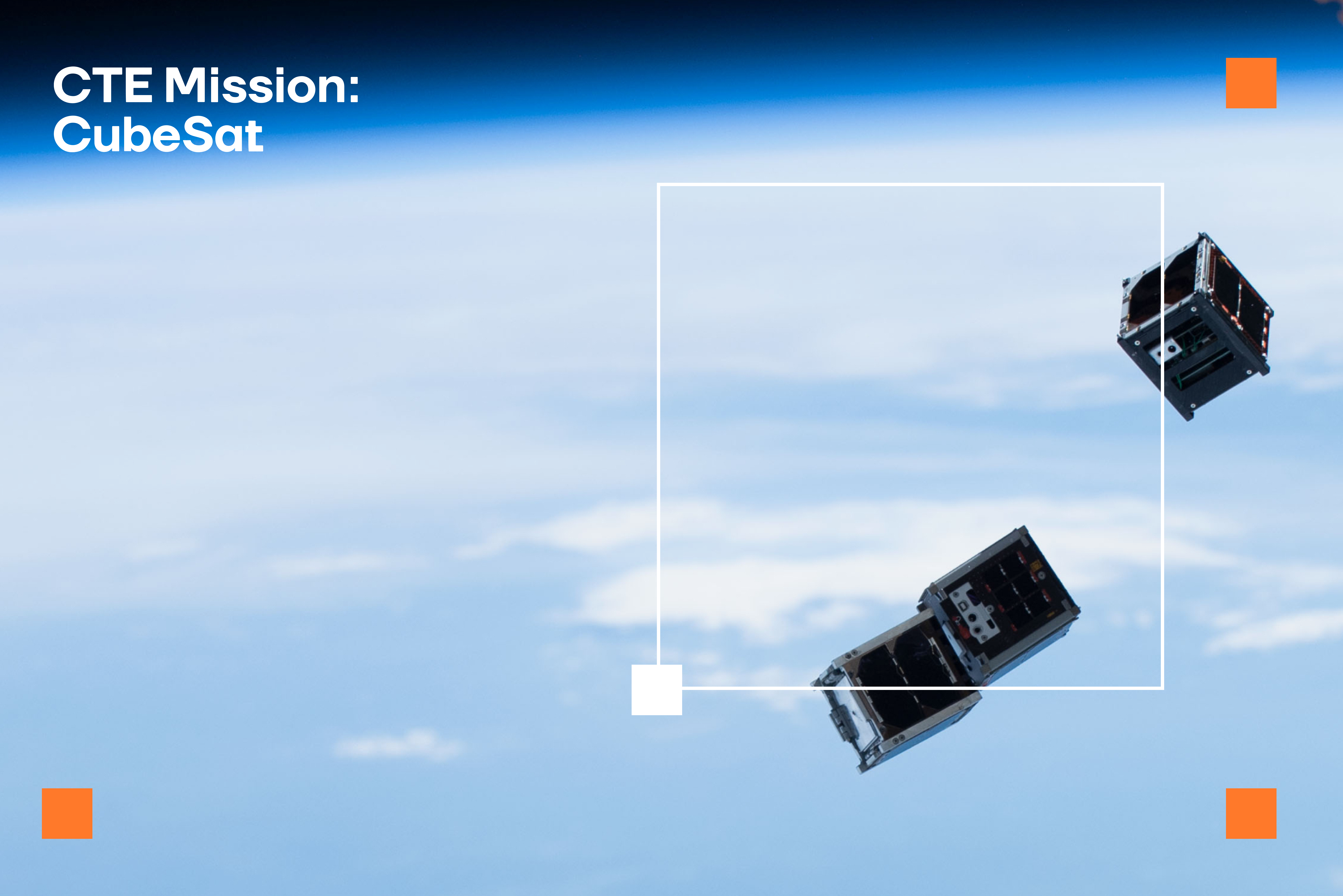Open innovation challenge puts CTE at the center of transformational learning experiences
Investors predict that space will be the next trillion-dollar industry, and realizing that vision will require a skilled workforce. Introducing students to space-related skills and projects can help fill future talent pipelines and open pathways to rewarding careers in aerospace, as well as other critical industries — including cybersecurity, infrastructure, and climate technology.
Many 21st-century jobs don’t even exist yet. Preparing students to create their own future begins with transforming career and technical education (CTE) experiences in schools. Increased access to STEM education and hands-on learning can nurture inventive minds and break down barriers for all students.
Student-led teams launch CubeSat prototypes
In August 2020, the U.S. Department of Education launched CTE Mission: CubeSat, a national Ed Prizes challenge to build technical skills for careers in space and beyond. The Department invited high schools to bring space missions to students by designing and building CubeSat prototypes. This multiphase challenge, designed and produced by Luminary Labs, offered students the chance to build small satellite prototypes while learning creative, collaborative, and technical skills for careers of the future.
CTE teachers led teams from 22 states as they developed missions for studying topics important to their own communities, as well as broader space exploration. In December, the U.S. Department of Education announced five finalists:
- Anderson Clark Magnet High School (La Crescenta, California) studied whether local encampments are in high-risk wildfire areas, with the goal of helping the local fire department save lives of people without housing.
- Freeport High School (Freeport, New York) measured Earth’s surface temperature to study the differences in heat absorption and retention between urban and rural areas.
- Mooresville High School (Mooresville, North Carolina) measured the effect of their town’s population growth on air quality, land use, and temperature.
- Opelika High School (Opelika, Alabama) collaborated with Columbus High School and Northside High School (Columbus, Georgia). The team collected performance data for a new type of core material used in NASA-grade fluxgate magnetometers, which are used to study Earth’s changing magnetic field.
- Princeton High School (Princeton, New Jersey) collaborated with Montgomery High School (Skillman, New Jersey). The team optimized space missions by examining topics such as atmospheric pressure density or habitable planetary environments.
During Phase 2, which began in January 2021, the finalists had access to mentors and additional virtual resources as they built CubeSat prototypes and planned flight events. April 28 marked the end of a successful Flight Week, with all five finalist teams launching their CubeSat prototypes. Upon submitting their flight reports to the U.S. Department of Education in May, the teams completed the final phase of CTE Mission: CubeSat.
Bringing equity and resiliency to the future of work
Each finalist team received $5,000 and in-kind prizes — including development kits and expert mentorship donated by Arduino, Blue Origin, Chevron, EnduroSat, LEGO Education, Magnitude.io, MIT Media Lab Space Exploration Initiative, and XinaBox. This support helped level the playing field for schools that didn’t have experience with CubeSats, local expertise in aerospace engineering, or budgets for project supplies.
The 2020-2021 academic year was difficult for teachers, students, and parents, with many schools fully remote and others shifting between in-person and hybrid schedules due to COVID-19. CTE Mission: CubeSat teams adapted to collaborating both online and in person, and the challenge offered virtual sessions with mentors and subject matter experts.
As the teams sourced components for their prototypes, they also encountered supply chain issues, but persevered to overcome challenges along the way. While all the finalist teams succeeded in launching their prototypes during Flight Week, even an unsuccessful launch would have been a successful learning experience; in the real world, being resilient enough to learn from experiences and try again is often more important than getting everything right the first time.
The teams’ thoughtfully designed missions examined real-world issues — such as wildfires, homelessness, and population growth — and answered research questions to better understand Earth, space, and their local communities. These experiments helped students develop stronger research, technical, communication, and collaboration skills — which can translate to careers in any industry.
The national challenge is only the beginning
Teachers who supported finalist teams are looking at incorporating similar hands-on learning in future CTE classes, as well as continuing student-led CubeSat projects. Some teams are also planning to iterate on their prototypes and seek opportunities for flying their experiments to space.
Schools that missed the chance to enter the challenge can use the CTE Mission: CubeSat resource hub to start their own CubeSat projects; in addition to curated educational resources, the hub includes recordings of virtual sessions with experts from academia, government, and industry.

